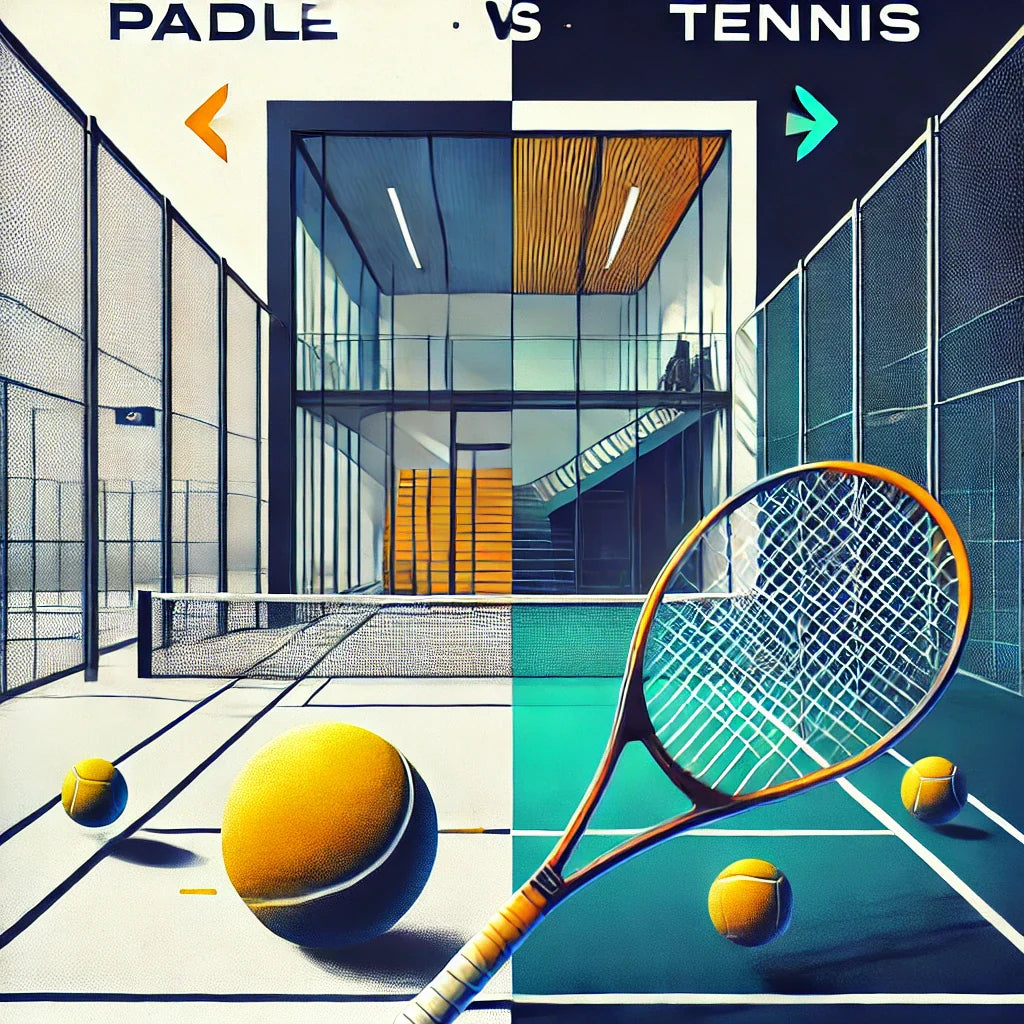
Padel vs. Tennis: How Do These Racket Sports Compare?
Padel vs. Tennis: How Do These Racket Sports Compare?
Padel and tennis are both popular racket sports, but they offer unique playing experiences that differ greatly from each other. Although they have similarities such as the use of rackets and balls, there are major differences in the rules of the game, playing style, physical strain and accessibility. In this blog, we compare padel and tennis and explain why padel is gaining popularity so quickly.
1. The Playing Field
- Padel: The court is 10 x 20 meters, considerably smaller than a tennis court, and is surrounded by glass walls that are part of the game. This gives padel a dynamic and tactical character.
- Tennis: A tennis court is much larger, 23.77 meters long and 8.23 meters wide (for singles). Here walls are not an issue, and the ball must remain within the lines.
Conclusion: The smaller court and glass walls make padel less physically demanding and more attractive to beginners, as rallies last longer.
2. The Racket and the Ball
- Padel: Rackets are solid, without strings, and more compact. The ball is similar to a tennis ball, but has a lower pressure for a slower game.
- Tennis: Rackets are larger, have strings, and the ball is harder with a higher bounce.
Conclusion: Padel rackets and softer balls are more user-friendly and make it easier to master the game.
3. Playing Style and Tactics
- Padel: The emphasis is on teamwork and clever placement. Thanks to the walls, the game is about strategy rather than brute force.
- Tennis: Speed and power play a bigger role here, with long distances and intense rallies.
Conclusion: Padel is more strategic and social, while tennis is more focused on individual performance.
4. Accessibility for Beginners
- Padel: The smaller court and slower pace make padel easier to learn. Beginners enjoy it more because of the longer rallies.
- Tennis: Tennis requires more technical skill and speed, making it more challenging for beginners.
Conclusion: Padel is an accessible entry-level sport, ideal for people without experience with racket sports.
5. Popularity and Growth
- Padel: This sport is the fastest growing racket sport in the world, with explosive growth in countries such as Spain, Belgium and the Netherlands.
- Tennis: Tennis remains an established sport worldwide, with iconic tournaments such as Wimbledon.
Conclusion: Padel is growing rapidly and is gaining ground due to its social character and simplicity.
6. Physical Exertion
- Padel: The smaller court and slower ball make the game less taxing. Ideal for recreational and older players.
- Tennis: Tennis requires more endurance and strength due to the larger court and intensive rallies.
Conclusion: Padel offers an energetic workout without heavy strain, perfect for players of all ages.
7. Social Aspects
- Padel: Played almost exclusively in doubles, making it a very social sport.
- Tennis: Tennis is often played in singles, although doubles is also popular.
Conclusion: Padel has a stronger social component and is ideal for athletes looking for a combination of fun and competition.
Why Padel Is So Popular
Padel combines accessibility, dynamism and social interaction. These characteristics make it attractive for both beginners and advanced players. Tennis remains a prestigious sport with a rich tradition, but padel is growing rapidly and is becoming popular with a wide audience.
At PadeLMQ we are happy to help you optimize your padel experience. Discover our range of rackets, shoes and accessories, or visit our physical shop in Padelclub Pachanga in Mechelen/Muizen. Want to know more? Contact us via WhatsApp: +32468258689 or e-mail: info @padelmq .be .


Leave a comment